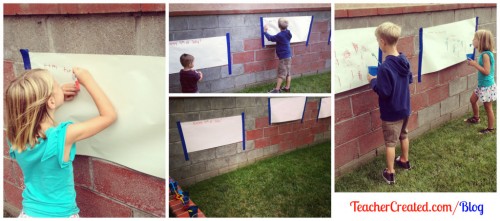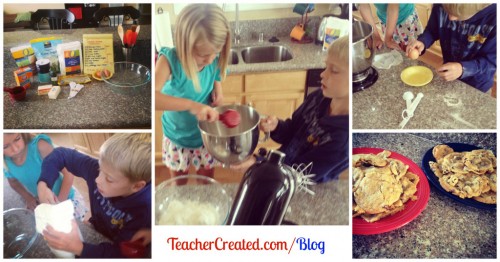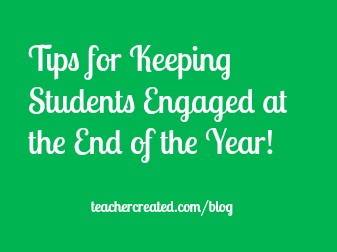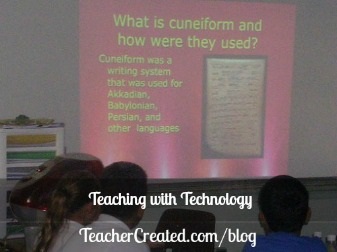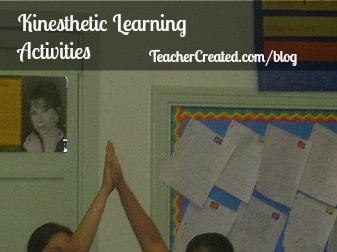Looking for a festive way to spend time with the kids this 4th of July while sneaking in school skills for summer? Check out these fun, educational activities that will keep the whole family laughing and learning together this Independence Day!
Note: All activities can be modified for different age groups. I worked with a toddler, kindergartner, and second grader. I tried to keep it simple with mostly common, inexpensive household ingredients. Please leave me a comment at the end of this post with a question or suggestion!
Activity 1: Bubble Fireworks!
The Prep: You’ll need butcher paper, tape, bubbles, bubble wands, red and blue food coloring, and cups. Mix the bubble liquid and food coloring in cups beforehand to avoid extra messes.
The Activity: Tape large pieces of butcher paper to a wall or fence outside. Have children write, copy, or trace a 4th of July greeting on their paper and write their names. Then, have them blow red and blue bubbles at the paper, creating a pretty fireworks effect!
The Skills: This can be added practice for developing writers, and you can throw in some history behind the 4th of July for older students. As the children blow bubbles, you can talk about art skills like spacing and color blending, or you could just allow them to get their creative juices flowing!
Activity 2: Patriotic Science!
The Prep: You’ll need baking soda, vinegar, red and blue food coloring, dishes, trays, or baking sheets with a lip, small containers or bowls, and medicine droppers. Set up a tray with a thin layer of baking soda for each participant. Pour vinegar into small bowls and color the vinegar with red and blue food coloring. Make sure that each child has a red and blue vinegar bowl, a baking soda tray, and a medicine dropper.
The Activity: When the vinegar is combined with the baking soda, it will create a fizzing chemical reaction. Start by trying to create a fizzy flag or other 4th of July themed creation. Then let them experiment with the reactants. Have a few paper bags handy so that you can dump out the trays and sprinkle a fresh layer of baking soda if kids want to start over periodically.
The Skills: Your junior scientists can talk about the reaction, hypothesize, and experiment! If you have safety glasses around the house, they could definitely add another layer of fun. The artist can work on a beautiful flag, and the mathematician can double-check the number of stripes on the flag.
Activity 3: Cookies to Share!
The Prep: You’ll need a recipe for cookies and all of the ingredients. Baking is not my strong suit, so I just used the recipe on the chocolate chip bag. I’d go for cookies from scratch to get all the fun out of the experience. I suggest writing the recipe in large letters on a piece of paper with check-off boxes. This way, the kids can go through and check off the list to make sure that they are following all of the directions. The recipe I used called for: 2 1/4 cup flour, 1 tsp baking soda, 1 tsp salt, 1 cup butter, 3/4 cup sugar, 3/4 cup brown sugar, 1 tsp vanilla, 2 eggs, 1 package chocolate chips. Combine the flour, baking soda, and salt in a bowl. Mix butter, sugar, brown sugar, and vanilla until smooth. Slowly mix in eggs and flour mixture. Fold in chocolate chips. Spoon cookies onto a greased cookie sheet and bake at 375°F for 9-11 minutes.
The Activity: Make the cookies according to your recipe, taking turns putting in ingredients and checking off the list. Don’t forget to share them with pride at your 4th of July barbecue!
The Skills: Making any recipe together builds teamwork and math skills. Be sure to point out how the measuring cups work and the importance of following all of the directions. You could modify this activity with any recipe you want and ramp up the complexity for older kids or find a healthier alternative to discuss nutrition.
What do you think about these festive 4th of July activities? Please share your comments, questions, or suggestions!
Emily Guthrie has taught junior high and high school English in Southern California for 8 years. She currently teaches grades 9-12, including AP English Language and Composition. She specializes in working with technology to enhance curriculum for English learners and enrichment students. She also blogs about fitness and motherhood at TheBusyMomsDiet.com.

